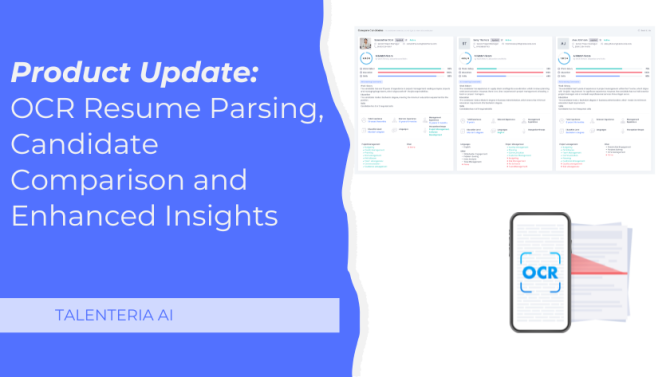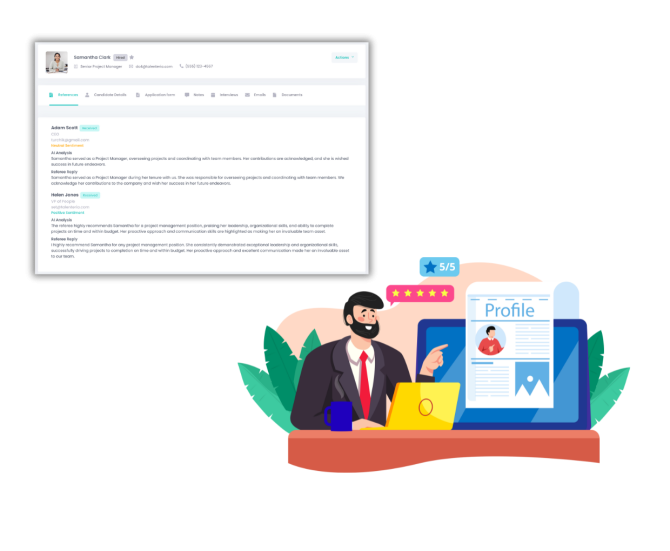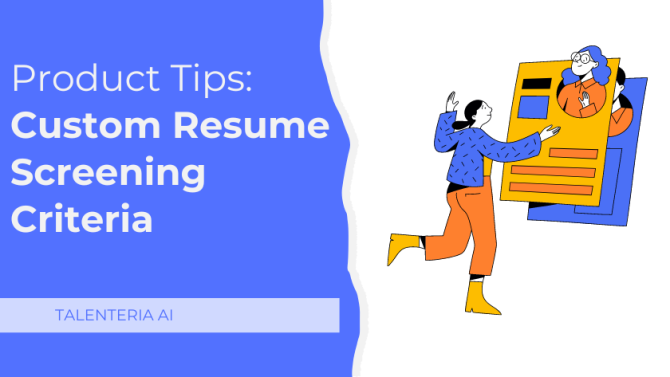
While trying to find the best job candidates for an open position, HR recruiters may forget that a well-thought-out content strategy can actually make their job more efficient and easier. By implementing informative and engaging content, recruiters are able to attract top talent by increasing their sites’ Google ranking – thus, drawing in people who are seeking information. Not only will this directly increase a recruiter’s talent pool but it will also help them build a reputation within a saturated sector as a thought leader and industry expert.
Are you currently implementing an HR content marketing strategy? And, if so, is it effective? If you feel that your content strategy is not as efficient as it could be, read on to find our top suggestions for developing an excellent recruitment marketing strategy.
Step 1: Determine Who Your Target Audiences Are
Your HR content should address three audiences: job seekers, new hires, and current employees. Now, these groups may be prioritized differently depending on your company’s goals and values. However, no matter what the audience is, you should ask these general questions:
- What is the biggest concern a new hire/employee/jobseeker has?
- What personality types would you like to pay the most attention to?
- What value does your company place on internal growth opportunities, experience, and education in the hiring process?
By answering these questions, you will understand more about your target audience – and you may also be inspired to create content addressing fresh topics. You can plot out a content strategy that might look a bit like this:
Audience Age Range: 30-50
Niche: Internet marketing
Competitors: becomeablogger.com, problogger.net
Engagement From: G+, Facebook
Needs: content marketing, blogging
If you are having trouble figuring out the needs of your audience, you can try preparing a survey, analyzing audience demographics, audit your competitors’ audiences, or visit forums related to your niche.
Step 2: Develop a Brand Voice
Content isn’t just used to project a brand’s voice into the marketing world – it is also able to reinforce the values of a brand and what an organization wants to achieve. Content is an excellent way to define a brand’s voice; HR-influenced content can also deliver the message throughout the workforce. Some exercises for defining your brand’s voice before implanting it in HR content include:
- Reviewing your organization’s mission statement and determining what your brand’s values are;
- Determining the tone of your voice – perhaps smart, informal, helpful, confident, or fun;
- Auditing your current content and note common themes and consistencies in tone and message; and
- Doing an audience survey, asking readers how they would describe your brand.
Step 3: Identify Channels of Communication
How do your target audiences want to hear from you? Are you going to use a blog, a Facebook group, an email newsletter, LinkedIn, or a different solution? Many job candidates will go directly to a company’s career page – therefore, if you only post your content to LinkedIn or a Facebook group, you are missing out on a lot of readers. We recommend using 2-3 platforms for sharing HR content.
Since you have already defined your target audiences, you can now pinpoint exactly where each group goes to find information about your industry. Publish content on those channels on a regular basis.
Step 4: Consider Creating a Content Map
A content map helps recruiters stay focused on their goals while planning content. You should ask yourself these questions while creating one:
- What should the reader take away after reading the content?
- How can this piece of content appeal to the target audience?
- What type of media should be incorporated into the content?
- What resources should be created to make the content appealing and valuable?
- Should you create the content yourself or outsource it?
- How can the content be repurposed?
You can also try concept mapping; this is where you create a graphic that shows how ideas connect. This will help you transition from one concept to another within a piece of content.
Step 5: Create a Schedule
When you are creating content, you should also focus on building consistency. By doing so, you will foster trust in your brand. When you consistently publish HR content, you will create cohesion in the company’s voice and culture. We recommend scheduling various aspects of your HR content plan, such as:
- Content creation
- Publishing times/dates
- Promoting content
- Auditing content for accuracy and quality
- Editing and updating old content
- Engaging with readers by responding to comments
Step 6: Publish Company News and Industry Insights
Some people believe that HR content is simply referring to articles and blog posts. While these are certainly useful, “content” encompasses so much more! Anything that a business produces is categorized as content – for instance, web copy, infographics, social media posts, and even contact details are all content. So be sure to take advantage of some of the more overlooked forms of content – such as informational emails that are sent to employees. By regularly sending out insights and news, you can generate buzz around new projects or upcoming partnerships. Sharing this information builds transparency, which, in turn, fosters employee satisfaction. This can then be used as part of your recruitment marketing strategy; employee referrals are an excellent, cost-effective way to add candidates to your talent pool.
Step 7: Enable Guest Contributions
If you solely create HR and marketing team-generated content, you are missing out on lots of opportunities. You can encourage employees to get involved by accepting their opinion pieces. This will strengthen an employee’s involvement in your organization and it also builds trust. Furthermore, potential job candidates are more likely to be engaged by something written by an employee as opposed to a “corporate” writeup. Content creation should be a collaborative process, in which people with different skill sets and varying points of view deliver valuable pieces.
By following those five steps, you are well on your way to having an effective HR content marketing plan!
Step 8: Boost Your SEO
If you want your recruitment marketing strategy to be truly effective and comprehensive, you should pay careful attention to your content’s SEO. Search engine rankings are of the utmost importance to your organization’s credibility, visibility, authority, and amount of natural traffic.
However, under half of small businesses have a dedicated SEO budget – and 17% of those that have only spend under $100/month on it. However, there are simple and effective things you can do to improve your SEO strategy without spending lots of money.
Firstly, you will want to take a look at your on-site SEO. This refers to the optimization of your site’s content, thus aiding search engines in understanding what your webpages are about and identifying pages that are relevant to search keywords.
The following on-site SEO strategies are cost-effective and will improve your ranking:
- Using tools to conduct basic keyword research
- Testing your site’s speed
- Adding new content to your site
- Updating your metadata
- Adding alt tags to your pictures
- Including internal and external links in your content.
You should also boost your off-site SEO; this boosts search engines’ perception of your site’s authority, relevancy, and trustworthiness. Part of this is encouraging trustworthy sites to link to your website – otherwise known as link-building. You can build links to your site by:
- Creating web content that is designed
- for linking and viral sharing
- Guest blogging on other sites
- Encouraging customers to link to you by sending out partnership badges
Why Use an HR Content Marketing Strategy?
Now that you understand how to set up a content marketing strategy, it is important to consider the “why” behind implementing these recruitment marketing ideas.
Firstly, a content marketing strategy will build trust. Any successful marketing strategy needs to position your organization as a trustworthy fount of knowledge and advice. This is no exception for a recruiting marketing plan. When you share current, accurate insights regarding your industry, clients and readers realize that they can look to you for useful information. You should strive to be the place where people go to read articles, thought pieces, and blog posts that can’t be found on competing sites.
Next, content marketing is an excellent cost-saving device. On average, recruiters spend about 30% of their budget on job board posts and subscriptions. This can be quite a significant cost – and not always worth it since job boards aren’t always an effective way to build your talent pool. By engaging readers with high-quality content on your own site, you will rank higher on Google and receive lots of organic traffic.
An effective content strategy will attract candidates to your open roles. Take advantage of this natural traffic by making your job descriptions stand out. Include insight into office culture, daily tasks, and quotes from employees.
With broad and diverse content, you can build a base of candidates who are suited for existing roles and upcoming positions. If you only create content that is related to current job openings, some readers will find the content to be irrelevant and decide to stop reading.
Our Tips for Writing Great Recruitment Content
If you want to write your recruitment content on your own and are new to it, you may be unsure where to start. So, we’re going to walk you through job candidates’ interests at varying stages of their job search and give content ideas that meet each interest.
- Awareness. Candidates in this stage have just become aware of your brand. You will need to make your brand stand out in order to retain their attention. Some content ideas for this area include giving expert comments on the latest trends in the industry, publishing an inspirational story from your CEO, and showcasing any recognition your company has earned.
- Consideration. You have captured the job seeker’s interest; now they want to learn more about your company. At this stage, it is crucial to offer content that emphasized your brand’s employee value proposition. Content for this includes ongoing team projects and career path stories from employees.
- Interest. Now, candidates are trying to determine whether your company is the best fit for them. You should offer content that revolves around your company culture, thus setting you apart from other opportunities. Office photos and staff testimonials are excellent pieces of content for this stage.
- Application. The candidates have decided to begin the application process – it can help if you publish content that guides them. Think along the lines of job descriptions, application instructions, and quizzes that match a candidate’s skills with available positions.
- Selection. Now that the applications are complete, candidates are going through the selection procedures. Consider publishing interview tips and tricks.
- Hire. You have now chosen the top candidates and they have become new hires. Content should help them prepare for their new position at your company. Welcome videos, an employee handbook, and an onboarding package are all great ideas.
Use Recruitment Marketing Automation
While following this guide to the letter can certainly boost your recruitment marketing strategy, it can be difficult to keep track of all the various components on your own. By using a streamlined recruitment marketing automation tool, you can track applicants, use screening tools, communicate through a self-service candidate portal, create job openings, and much more – saving yourself lots of time and energy.





